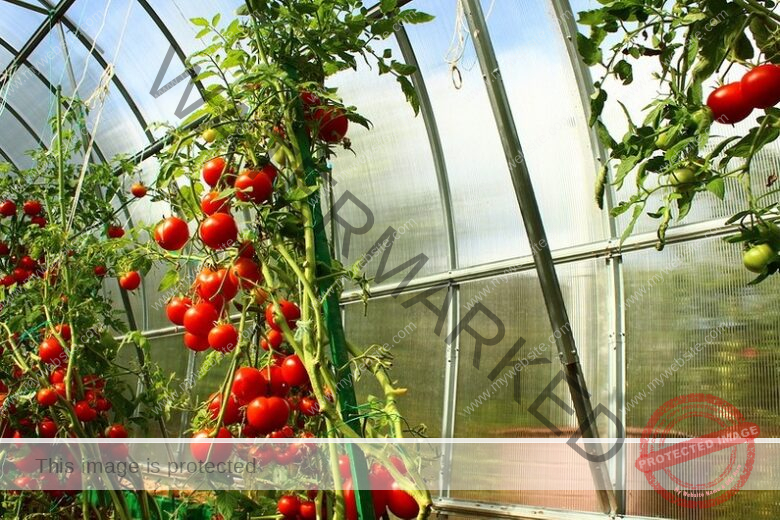As you delve into the agricultural landscape of Tanzania, you will discover that irrigation plays a vital role in crop production.
Tanzania is home to a diverse range of irrigation schemes, both public and private, which contribute significantly to the country’s economy.
With a focus on maximizing crop yields, these irrigation schemes are spread across different regions of the country and have different operational mechanisms.
In this article, you will explore a comprehensive list of irrigation schemes in Tanzania and gain insights into the various types of irrigation systems, water sources, and their impact on the country’s economy.
List Of Irrigation Schemes in Tanzania
In Tanzania, irrigation schemes play a crucial role in agricultural development, water management, and food production.
The country employs various irrigation methods, including surface irrigation, sprinkler irrigation, and drip irrigation.
These schemes aim to supplement natural rainfall and ensure a reliable water supply for crops.
Read Also: List of Irrigation Schemes in South Africa
Tanzania’s irrigation schemes are implemented through a combination of public and private initiatives, with government support and investment in infrastructure.
Efficient water management, advanced technologies, and sustainable practices are emphasized to optimize water use, improve crop yields, and support the growth of the agricultural sector.
We have categorize the list of irrigation schemes in Tanzania into both public and privately developed irrigation schemes.
Here’s an expanded list of irrigation schemes in Tanzania, categorized under private and public:
Read Also: List of Irrigation Schemes in Nigeria
#1. Private Irrigation Schemes in Tanzania:
- Kilombero Valley Irrigation Scheme
- Kilimanjaro Plantation Irrigation Scheme
- Green Belt Irrigation Scheme
- Mbarali Irrigation Scheme
- SAGCOT Irrigation Scheme
- Malolo Irrigation Scheme
- Usangu Irrigation Scheme
- Ihemi Cluster Irrigation Scheme
- Mngeta Irrigation Scheme
- Mbakaouke Irrigation Scheme
- Kapunga Rice Irrigation Scheme
- Katani Irrigation Scheme
- Makutapora Irrigation Scheme
- Kilolo Irrigation Scheme
- Rukwa Valley Irrigation Scheme
#2. Public Irrigation Schemes in Tanzania:
- Manyara Irrigation Scheme
- Ruvu Irrigation Scheme
- Wami-Ruvu Basin Irrigation Scheme
- Lake Victoria Basin Irrigation Scheme
- Pangani River Basin Irrigation Scheme
- Kilombero River Basin Irrigation Scheme
- Rufiji River Basin Irrigation Scheme
- Ruaha River Basin Irrigation Scheme
- Great Ruaha River Basin Irrigation Scheme
- Lake Nyasa Basin Irrigation Scheme
- Rukwa River Basin Irrigation Scheme
- Lake Tanganyika Basin Irrigation Scheme
- Lake Eyasi Basin Irrigation Scheme
- Lake Natron Basin Irrigation Scheme
- Lake Rukwa Basin Irrigation Scheme
Please note that this is not an exhaustive list, but it includes a more comprehensive range of irrigation schemes in Tanzania, both privately and publicly operated.
Types Of Irrigation Systems in Tanzania
There are different types of irrigation systems used in Tanzania. They include the following.
Read Also: List of Irrigation Schemes in Kenya
#1. Surface Irrigation
Surface irrigation is a common method used in Tanzania, where water is applied to the soil surface and allowed to infiltrate and move across the field.
This includes techniques like furrow irrigation, border irrigation, and basin irrigation.
#2. Sprinkler Irrigation
Sprinkler irrigation involves the use of sprinklers to distribute water over the crops in the form of a spray.
This method is suitable for various crops and can be employed in both small-scale and large-scale farming operations.
Read Also: Drip Irrigation System Zimbabwe
#3. Drip Irrigation
Drip irrigation is a precise and water-efficient system that delivers water directly to the plant roots using a network of tubes and emitters.
This method is especially effective in areas with limited water resources and can be used for a wide range of crops.
#4. Subsurface Irrigation
Subsurface irrigation involves the application of water below the ground surface, directly to the plant root zone.
This method minimizes water loss due to evaporation and is commonly used for crops with shallow root systems.
Read Also: Drip Irrigation System Zambia
#5. Center Pivot Irrigation
Center pivot irrigation utilizes a rotating system of sprinklers mounted on a central pivot point.
This method is suitable for large-scale agricultural operations and can effectively cover a large area with minimal labor requirements.
Sources of Water for Irrigation in Tanzania
The availability and suitability of water sources vary across different regions of Tanzania.
#1. Rivers and Streams
Rivers and streams serve as significant sources of water for irrigation in Tanzania. Water is diverted from these natural water bodies to irrigation canals or reservoirs, providing a continuous supply of water for agricultural purposes.
#2. Lakes and Reservoirs
Tanzania is home to several large lakes and reservoirs, such as Lake Victoria, Lake Tanganyika, and numerous smaller reservoirs. These water bodies serve as important sources of irrigation water, providing a reliable supply for agricultural activities.
Read Also: Drip Irrigation System Kenya
#3. Groundwater
Groundwater, obtained through wells and boreholes, is another vital source of water for irrigation in Tanzania.
Underground aquifers hold significant water reserves, which can be accessed and utilized for crop irrigation, especially in areas where surface water may be limited.
#4. Rainwater Harvesting
Rainwater harvesting involves capturing and storing rainfall runoff for future irrigation use.
This method is particularly useful in areas with seasonal rainfall patterns, where water can be collected in reservoirs or tanks during the rainy season for irrigation during dry periods.
#5. Small-Scale Water Storage
Small-scale water storage systems, such as ponds and small dams, are employed in Tanzania to capture and store rainwater or runoff.
These localized water sources are used for irrigation purposes, particularly in smallholder farming systems.
#6. Water Conservation and Recycling
Efforts are made to conserve and recycle water within the irrigation systems. Techniques like water reuse, where drainage water is collected and treated for reuse in subsequent irrigation cycles, help optimize water resources and minimize wastage.
Importance Of Irrigation Schemes in Tanzania
Irrigation schemes play a crucial role in Tanzania’s agricultural sector, contributing to food security, income generation, and rural development.
They help reduce reliance on rainfed agriculture, mitigate the impacts of climate variability, and enable year-round crop production.
By providing a controlled water supply, irrigation schemes support the cultivation of high-value cash crops, enhance productivity, and promote sustainable agricultural practices.
Benefits Of Irrigation Schemes in Tanzania
Irrigation schemes offer several benefits to Tanzania’s agricultural sector. They increase crop yields and production, ensuring a stable food supply and reducing dependence on imported goods.
Irrigation enables farmers to diversify their crop choices, cultivate high-value crops, and access lucrative markets.
It also creates employment opportunities, improves rural livelihoods, and stimulates economic growth by enhancing agricultural productivity.
Impact Of Irrigation Schemes in Tanzania
The impact of irrigation schemes in Tanzania is multi-faceted. They contribute significantly to increased agricultural output and productivity, improving the livelihoods of farmers and rural communities.
Irrigation schemes also enhance food security, reduce poverty, and promote socio-economic development by creating job opportunities along the agricultural value chain.
Moreover, irrigation contributes to sustainable land and water management, supporting ecosystem health and resilience.
Limitations facing irrigation schemes in Tanzania
The impact of irrigation schemes in Tanzania is multi-faceted. They contribute significantly to increased agricultural output and productivity, improving the livelihoods of farmers and rural communities.
Irrigation schemes also enhance food security, reduce poverty, and promote socio-economic development by creating job opportunities along the agricultural value chain.
Moreover, irrigation contributes to sustainable land and water management, supporting ecosystem health and resilience.
Dakawa Irrigation Scheme
The Dakawa Irrigation Scheme is a notable irrigation project in Tanzania located in Morogoro region.
It covers a substantial area and focuses on the cultivation of various crops, including rice, maize, and vegetables.
The scheme utilizes water from the Great Ruaha River and employs modern irrigation techniques to enhance agricultural productivity and support local farmers in achieving sustainable livelihoods.
Irrigation Scheme Project
An irrigation scheme project in Tanzania refers to a planned initiative aimed at developing and managing irrigation systems to enhance agricultural productivity.
These projects typically involve the construction of infrastructure, such as canals, dams, and pumping stations, to divert and distribute water for irrigation purposes.
Irrigation scheme projects play a crucial role in promoting food security, poverty reduction, and rural development in the country.
Irrigation Schemes Meaning
In Tanzania, irrigation schemes refer to organized systems and structures designed to supply water to agricultural fields for crop cultivation.
These schemes involve the development of infrastructure, including canals, pipes, and pumps, to deliver water efficiently to the fields.
The purpose of irrigation schemes is to provide a controlled water supply, allowing farmers to grow crops year-round, increase yields, and mitigate the risks associated with rainfall variability.
Irrigation Companies In Tanzania
These companies offer a range of solutions, including the design, installation, and maintenance of irrigation infrastructure, supply of irrigation equipment and technologies, and expertise in water management and agricultural practices.
Some notable irrigation companies in Tanzania include both local and international firms that support the development and implementation of irrigation projects across the country.
National Irrigation Commission Tanzania
The National Irrigation Commission in Tanzania is a government body responsible for the planning, coordination, and oversight of irrigation activities in the country.
The commission plays a vital role in formulating irrigation policies, promoting sustainable water management practices, and providing guidance and support to irrigation projects.
It works in collaboration with various stakeholders, including government agencies, farmers’ associations, and development partners, to ensure efficient and effective implementation of irrigation initiatives and the sustainable use of water resources.
Conclusion
The list of irrigation schemes in Tanzania reflects the nation’s commitment to agricultural development and ensuring food security. These schemes, with their diverse systems and water sources, contribute to increased crop production, economic growth, and sustainable farming practices. By harnessing the power of irrigation, Tanzania paves the way for a prosperous agricultural sector and a brighter future.




